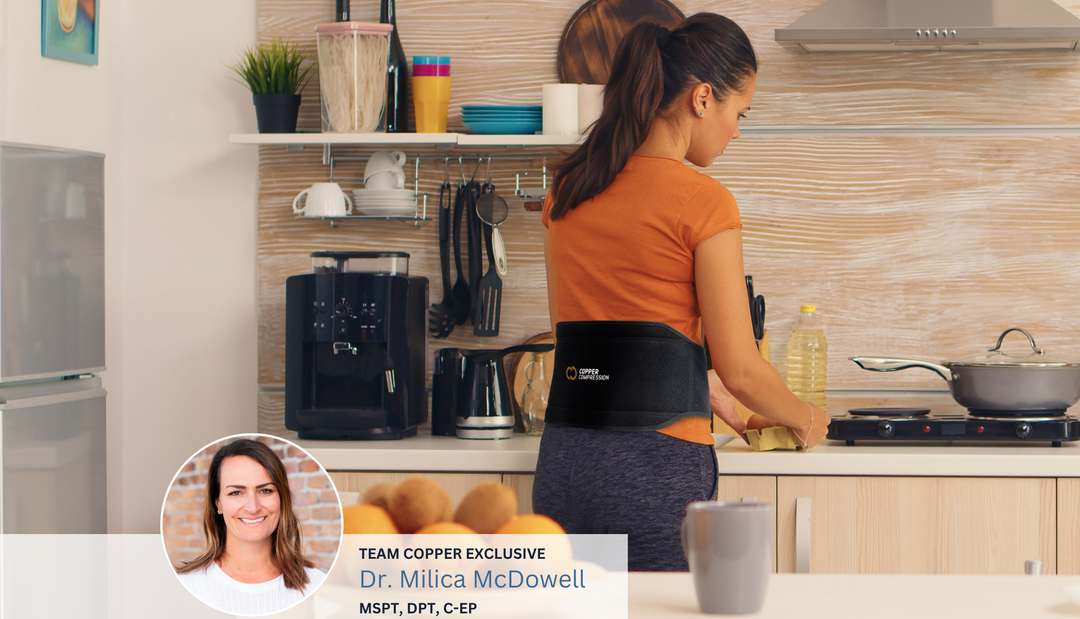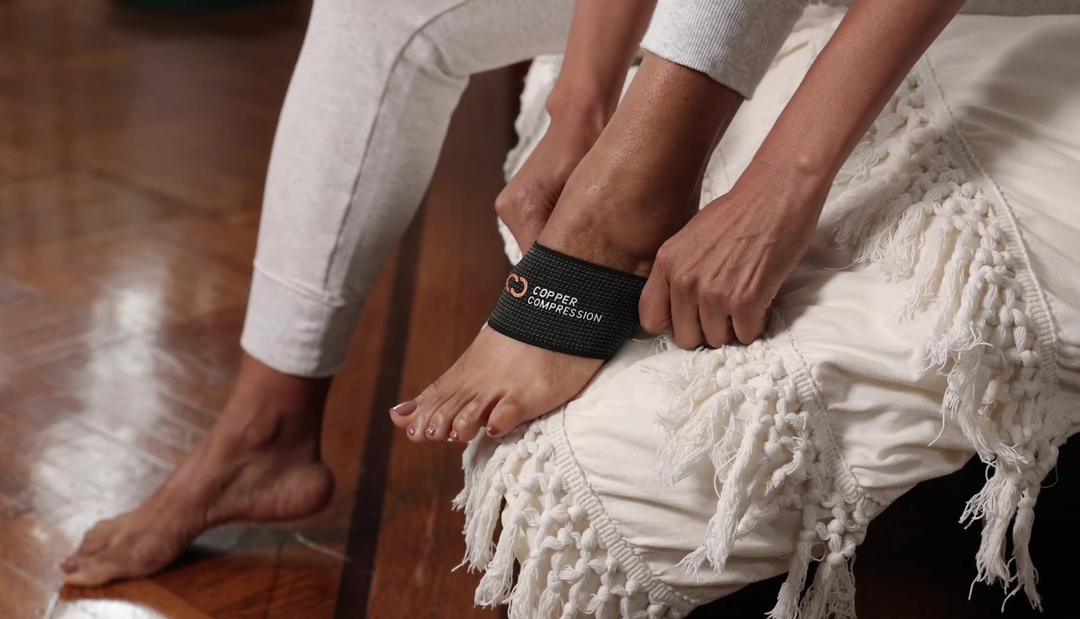Are Copper Compression Socks Good for Diabetics?
If you or someone you know is diabetic, then it’ll come as no surprise that the most common diabetes side effect is foot pain. According to the Centers for Disease Control and Prevention (CDC), about half of all people with diabetes have some kind of nerve damage in their feet or other commonly affected areas. Nerve damage can affect your hands, feet, legs, and arms by causing numbness and loss of feeling. One of the most effective ways to combat pain, numbness, and other issues associated with nerve damage in the feet is to wear copper compression socks. But what causes that pain to begin with?
When diabetics have high blood sugar (AKA hyperglycemia) left untreated, this can lead to nerve damage called diabetic neuropathy, which causes numbness or loss of feeling in the feet. Ultimately, diabetes causes blood sugar to rise because the pancreas can’t produce insulin on its own like it typically does. Insulin helps the body to break down fats and sugars into energy and regulated blood sugar in your body.
This is why it’s important for diabetics to maintain a healthy lifestyle through physical activity and healthy eating. Eating too much sugar like those in complex carbohydrates and your favorite desserts, for example, can cause blood sugar levels (AKA blood glucose levels) to rise even more. Without insulin, there’s no way the body can regulate its blood sugar naturally.
Truth be told, most foods break down into blood sugar because most foods contain carbohydrates. But there are certain foods like processed meats, white carbohydrates, and refined sugar that are the main culprits of a blood sugar spike and can cause nerve damage in your feet. Even if you do everything ‘right’ as a diabetic, diabetes can restrict blood flow in your feet and cause pain. You can prevent it from getting out of control and slow the progression of neuropathy with compression socks, medicine, and other remedies.
Ahead, learn more about how copper compressions socks are great for those with diabetes.
What are Compression Socks?
Compression socks are socks that compress your feet in order to increase blood flow, increase, blood circulation, and decrease swelling/inflammation. They also prevent blood from pooling in the veins, which in turn can prevent and/or ease the following conditions.
- Deep Vein Thrombosis (DVT, when a blood clot forms in the legs)
- Veinous leg ulcers
- Foot ulcers
- Varicose veins
- Venous hypertension
- Lymphedema
- Foot injuries
- Chronic venous insufficiency
From athletes and people with diabetes to people who sit at a desk all day and travel by plane, anyone can benefit from compression socks. They come in different lengths from ankle length to knee length. Since diabetes affect the feet and legs, diabetic patients may want to opt for knee-high compression socks.
Shop Copper Compression's ankle sport socks here.
Shop Copper Compression's knee high socks here.
What’s the Difference Between Everyday Socks and Compression Socks
You’re probably thinking, ‘what’s the difference between a pair of socks and a pair of compression socks? Regular socks are meant to absorb heat while compression socks — which are made from synthetic materials like nylon, lycra, or spandex — are breathable and release heat. They’re moisture wicking, which means sweat will be wicked away from your body and keeps feet cool, dry, and comfortable.
Even though they keeps moisture out, they still warm the muscles and supports the joints. It reduces foot prevents swelling, and relieve symptoms from chronic conditions, and improves athletic performance.
Compression socks can be worn all day and over night. Our compression socks, like most, come in different sizes. Ensuring that you wear the proper fit allows for the compression benefits to take effect. Like sizes, there are different compression levels. Compression levels between 15 and 30 mmHg are advised for the best results, according to multiple studies.

According to a 2018 study published in the International Journal of Vascular Medicine, the optimal pressure for elastic compression stockings (which are compression socks that can go to your thigh) are controversial, but they found that the higher mmHg (blood pressure levels) reduces oedema/edema (swelling) more than lower levels.
Ultimately, socks are meant to warm up and protect your feet, while compression socks warm up your muscles, improves circulation problems, prevents injuries, and helps recovery from injuries. It also helps people with blood flow issues like those with diabetes.
How Can Copper-Infused Compression Socks Help Diabetics?
Copper-infused socks like Copper Compression socks include all of the compression benefits with the addition of copper material benefits. They help improve blood flow and circulation, while also including the following copper qualities:
- Anti-microbial
- Anti-odor
- Breathable
- Prevents fungal infections like athlete’s foot
Why is this important for diabetics specifically? Because diabetics are prone to infections and a weakened immune response. With anti-bacterial socks, they have one less thing to worry about!
“High blood sugar levels can weaken a person’s immune system defenses. People who have had diabetes for a long time may have peripheral nerve damage and reduced blood flow to their upper and lower extremities like the lower legs, which increases the chance for infection. The high sugar levels in your blood and tissues allow bacteria to grow and allow infections to develop more quickly,” according to APIC.org.
If foot infections [AKA diabetic foot], aren’t treated properly, this could potentially lead to amputation. Since compression and copper-infused fabric address all of the above issues, Copper Compression socks can help diabetics over foot health.
Diabetic Socks Vs Compression Socks: What’s the Difference?
Diabetics that are dealing with poor circulation have probably heard of diabetic socks and compressions socks. The former mainly prevents skin irritation while the latter mainly improves poor blood circulation. Some diabetic socks include compression materials.
Compression socks have more abilities to increase pressure on your feet and legs so that blood can flow to your heart and circulate throughout your body. Diabetic socks provide light compression to relieve swelling but not always to the extent of compression socks.

Can Type 2 Diabetics wear compression socks?
Wearing compression socks as a type 2 diabetic will allow blood flow to circulate to your heart and throughout your body. As a type 2 diabetic, you’ll experience high blood sugar levels which can cause swelling in the feet and restrict blood flow. Compression socks can help get your blood flowing and alleviate inflammation.
Speak to your healthcare provider for more information or visit coppercompression.com to learn about our Copper Compression products.








